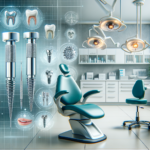Understanding the Basics: Key Components of Professional Audio Equipment
In the world of audio production, whether in a studio or a live setup, having the right equipment can make all the difference. Professional audio equipment is designed to capture, process, and reproduce sound with exceptional clarity and precision. The core components of any audio setup include microphones, mixers, audio interfaces, monitors, and headphones. Each piece plays a critical role in ensuring that sound is accurately captured and reproduced.
Microphones are the starting point of any audio chain. They come in various types, such as dynamic, condenser, and ribbon, each suited to different applications. For instance, dynamic microphones are robust and ideal for live performances, while condenser microphones offer high sensitivity and are commonly used in studio recordings.
Mixers are essential for combining multiple audio signals into a cohesive output. They allow sound engineers to adjust levels, add effects, and route audio to different destinations. In a live setup, mixers are crucial for balancing the sound from various instruments and microphones, ensuring that the audience hears a harmonious blend.
Audio interfaces connect microphones and instruments to a computer, converting analog signals into digital data. This conversion is vital for recording and editing audio in digital audio workstations (DAWs). High-quality interfaces ensure low latency and high fidelity, which are crucial for both studio and live applications.
Monitors and headphones are the final link in the audio chain, allowing engineers to hear the sound as accurately as possible. Studio monitors are designed to provide a flat frequency response, ensuring that the sound is not colored by the equipment. This accuracy is essential for making informed mixing and mastering decisions.
Studio Use: Crafting the Perfect Sound
In a studio environment, the goal is to create recordings that capture the artist’s vision with precision and clarity. This requires a controlled environment and high-quality equipment. Acoustic treatment is often the first step in setting up a studio, as it minimizes reflections and external noise, creating an ideal space for recording.
Once the environment is optimized, the focus shifts to the equipment. A reliable digital audio workstation (DAW) is the heart of the studio, offering a platform for recording, editing, and mixing audio. Popular DAWs provide a range of tools and plugins that allow engineers to manipulate sound in creative ways, from adding reverb to fine-tuning EQ settings.
Outboard gear, such as preamps and compressors, can also enhance the recording process. Preamps boost the signal from microphones, adding warmth and character to the sound. Compressors control the dynamic range, ensuring that the audio remains consistent and polished. These tools, when used effectively, can elevate a recording from good to outstanding.
Studio monitors play a critical role in the mixing and mastering process. Their flat frequency response allows engineers to hear the audio as it truly is, enabling precise adjustments. Headphones are also essential, particularly for checking stereo imaging and isolating specific elements of a mix.
Ultimately, the combination of a well-treated environment, high-quality equipment, and skilled engineers results in recordings that stand the test of time, capturing the essence of the music in its purest form.
Live Setups: Delivering an Unforgettable Performance
Live performances present unique challenges that differ significantly from studio work. In a live setting, the goal is to deliver a powerful and engaging experience for the audience. This requires equipment that is not only high-quality but also robust and reliable.
One of the key components in a live setup is the PA system, which amplifies sound to reach the entire audience. This system includes speakers, amplifiers, and subwoofers, each playing a role in delivering clear and impactful sound. Line arrays are often used for larger venues, providing even coverage across the audience area.
Wireless microphones are a popular choice for live performances, offering freedom of movement for performers. These microphones use radio frequencies to transmit audio signals to receivers connected to the sound system. The choice of frequency band and the quality of the transmitter and receiver can significantly impact the performance.
Monitoring systems in live setups are crucial for performers to hear themselves and other musicians on stage. In-ear monitors are commonly used, offering a personalized mix and reducing stage noise. This allows performers to focus on their performance without being distracted by external sounds.
Sound engineers play a vital role in live performances, adjusting levels and effects in real-time to ensure a balanced and engaging sound. They rely on digital mixing consoles, which offer flexibility and control over every aspect of the audio. These consoles often include features such as scene recall and remote control, allowing for seamless transitions between different parts of a performance.
In conclusion, live setups require a combination of high-quality equipment and skilled engineers to deliver an unforgettable experience. By understanding the unique challenges and requirements of live sound, performers and engineers can work together to create moments that resonate with audiences long after the final note is played.







